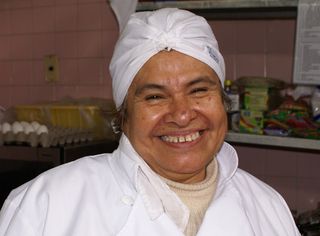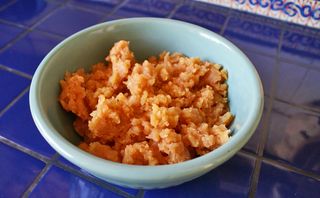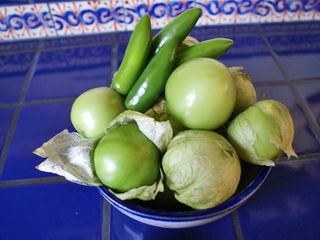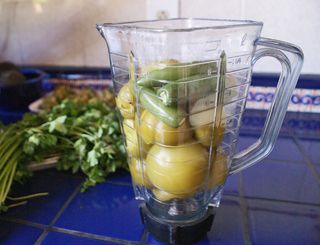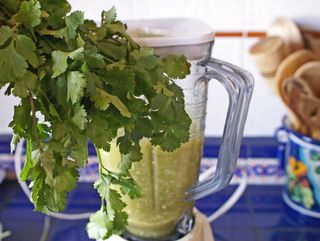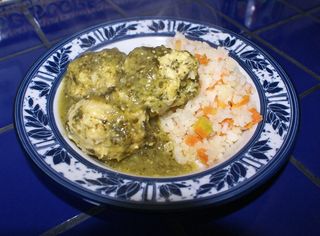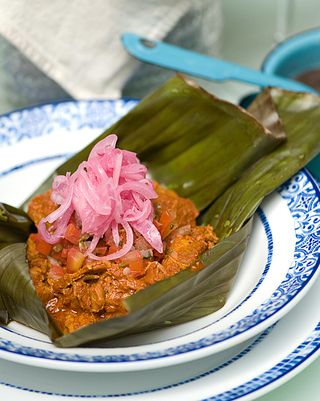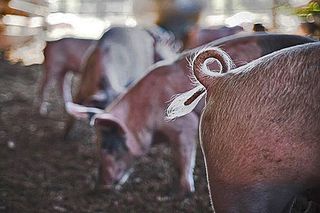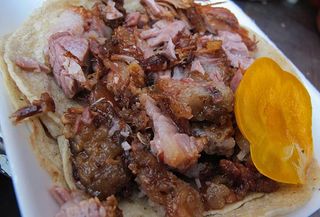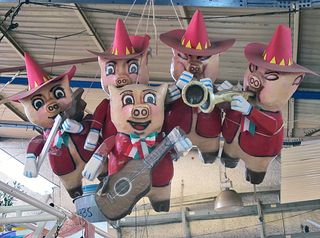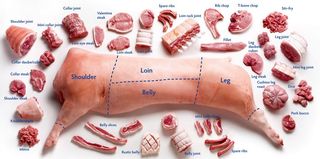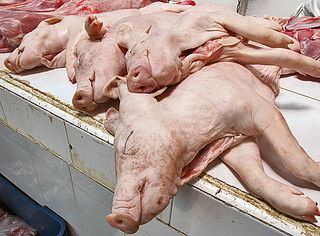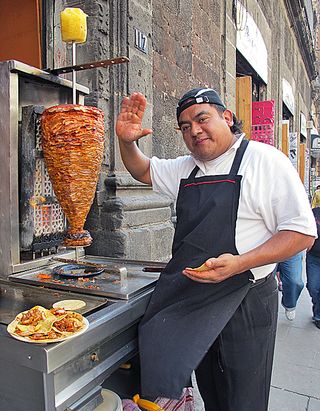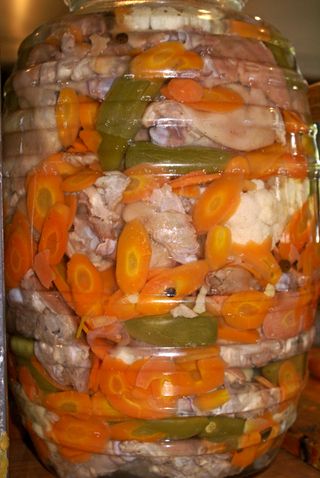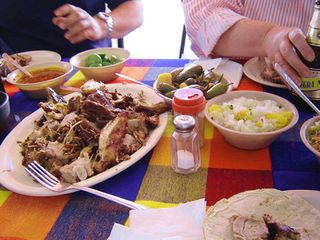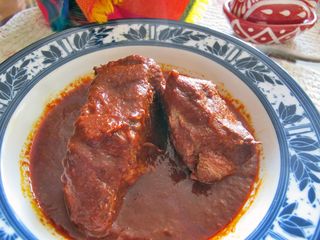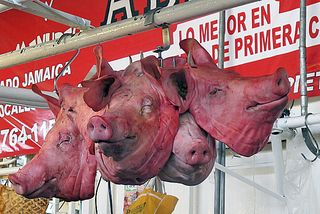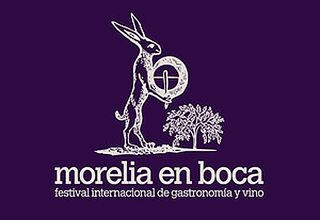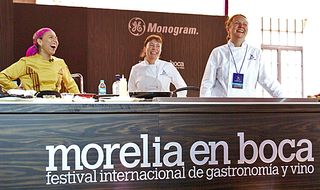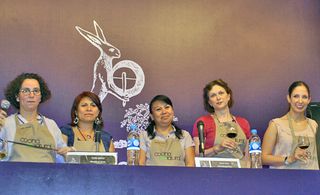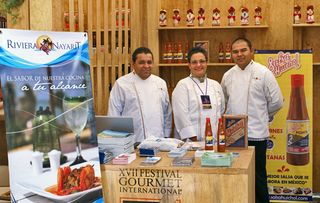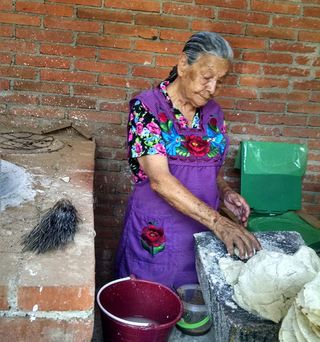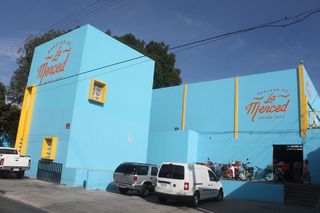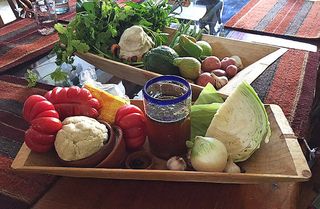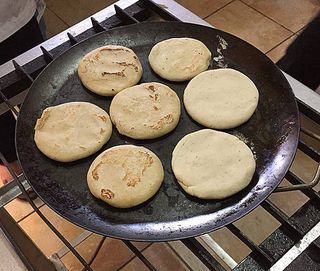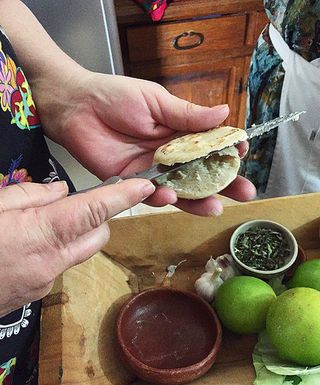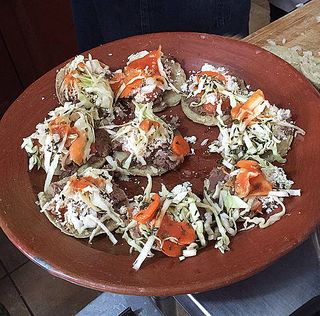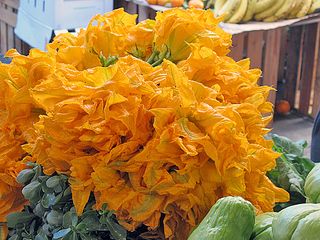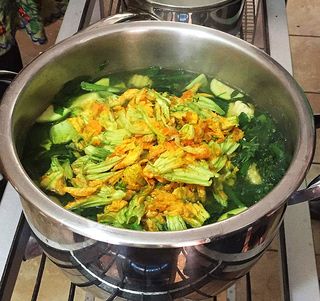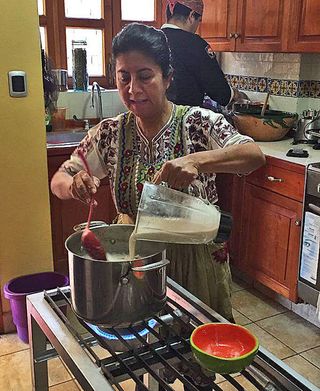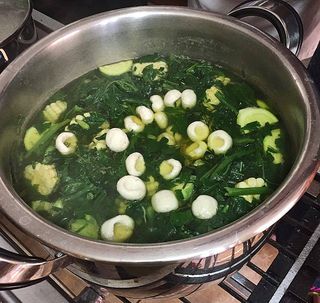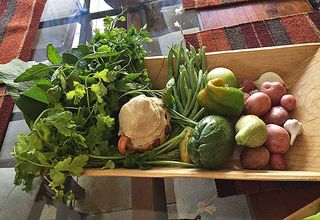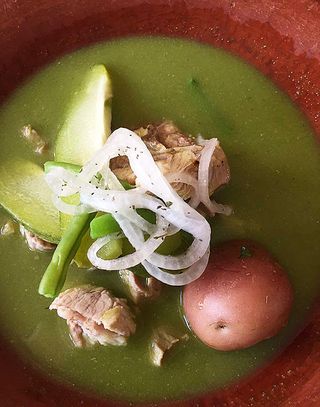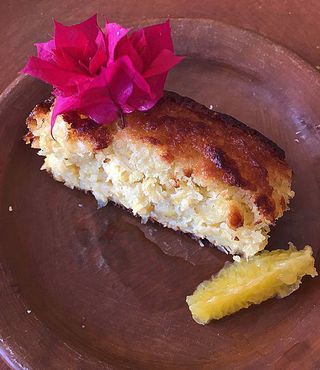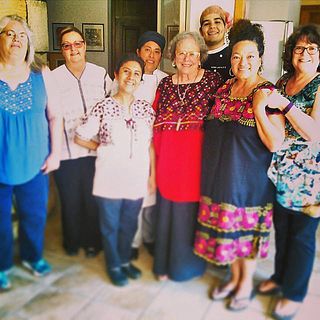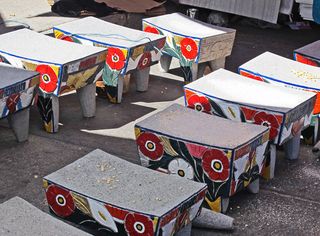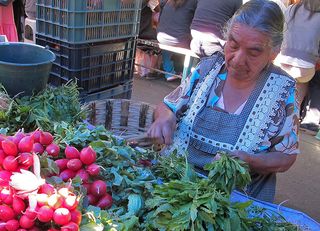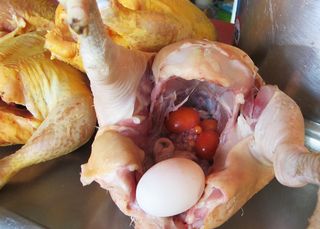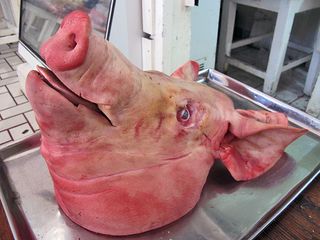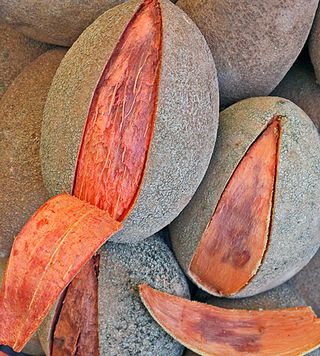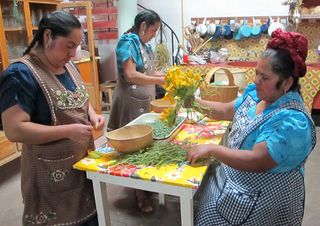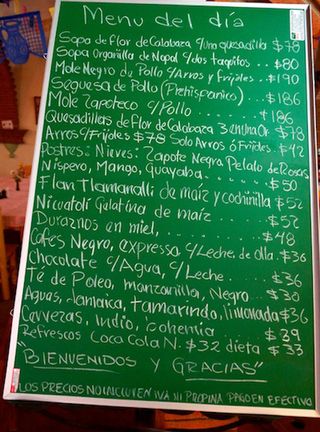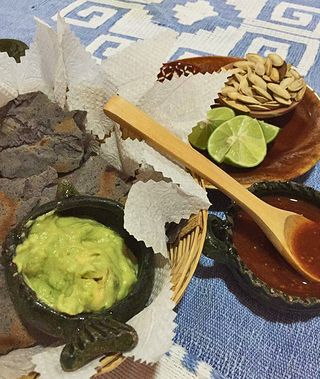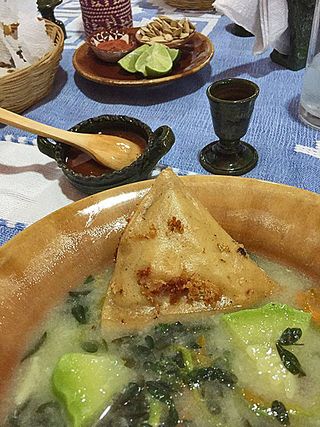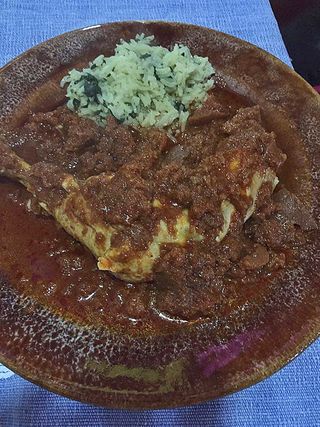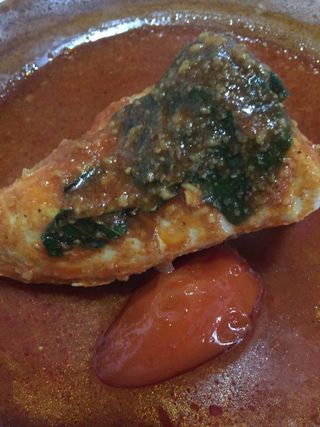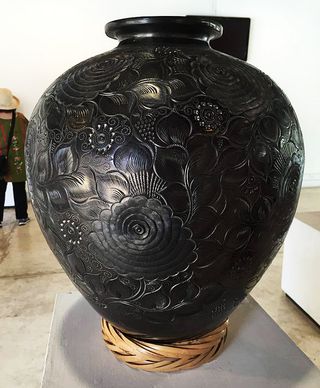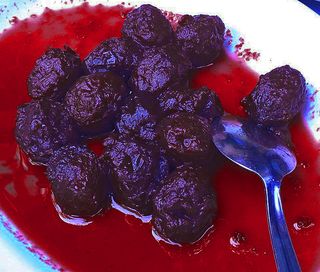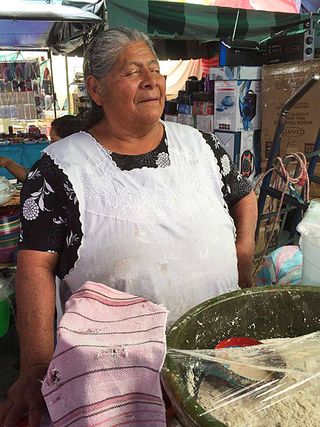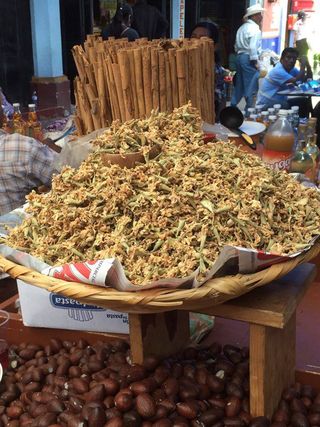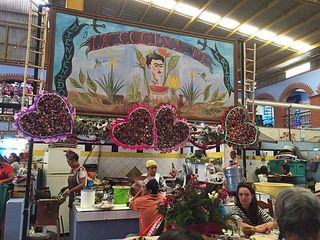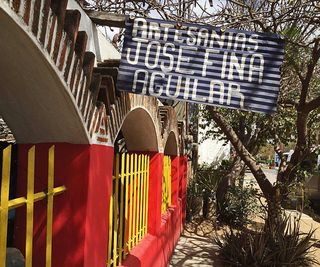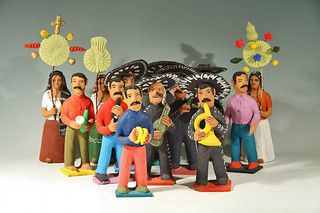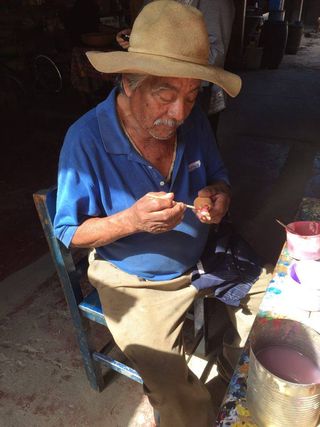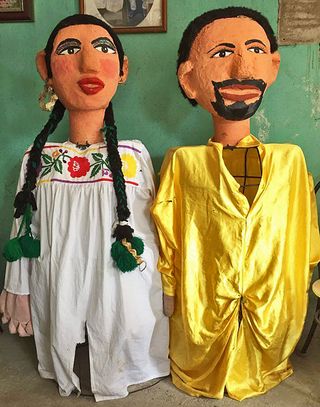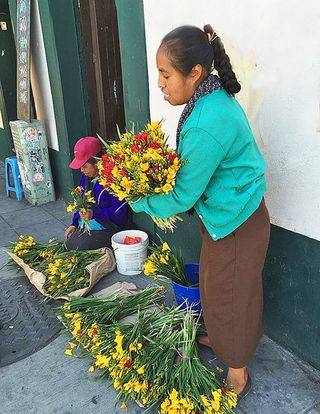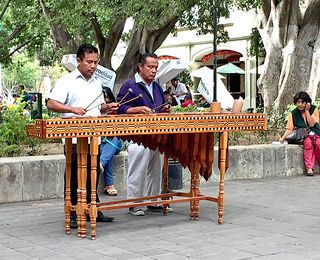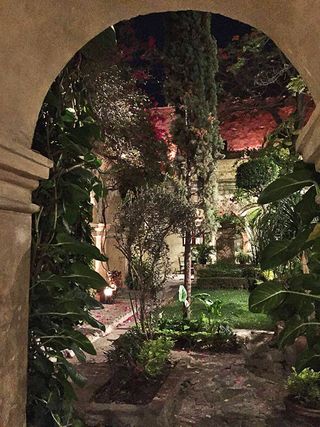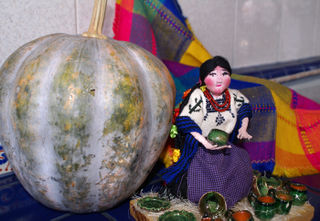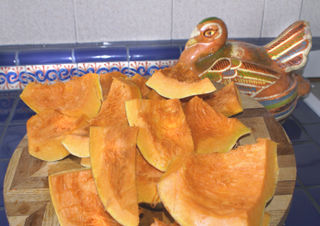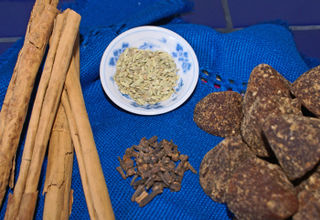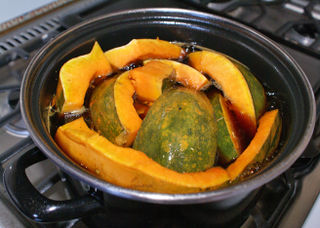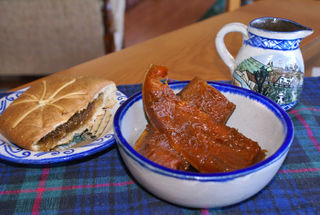
A classic quick breakfast in the USA, circa 1950s: cold unsweetened cereal with milk and sugar, plus a banana.
Several times a month, Mexico Cooks! receives vacation-time queries from folks in the United States about mealtimes and what's eaten when in Mexico. It can be challenging to plan a trip to any country, including Mexico, where mealtimes are different from what you might think of as 'normal'. This week and for the next two weeks here at Mexico Cooks!, you'll learn more about meals and mealtimes.
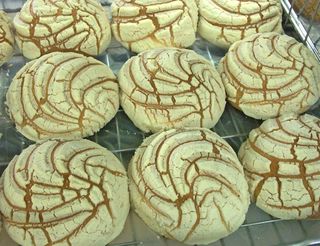
In Mexico, a huge variety of pan dulce (sweet bread) is available for breakfast. These are conchas (shells), so-called because of the design impressed into their sugared tops. Have your pan dulce with either hot chocolate, coffee, or a steaming cup of atole (a corn-based hot beverage).
It can be even more challenging for anyone raised in one frame of reference to understand that breakfast isn't always about what you have always thought of as your first meal of the day. Many years ago, when I was first living in Mexico, the light bulb came on for me: breakfast food is whatever you happen to eat for breakfast. You know how leftover pizza straight from the refrigerator is a guilty breakfast for a lot of people in the States? A slice is really a perfectly adequate breakfast. Lots of Mexican breakfasts are just like that: whatever food is available at the moment.
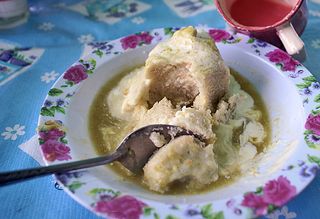
The corunda is a regional tamal from Michoacán. This corunda, filled with cream cheese and topped with Mexican table cream and a sauce made of chile perón (a Michoacán-grown chile), makes a great desayuno when accompanied by a cup of hot atole de zarzamora (a corn-based hot drink).
People in Mexico frequently eat two morning meals. The first is desayuno, which comes from the root word ayunar, to fast. Desayuno literally means "I un-fast" and is ordinarily eaten first thing in the morning, maybe before work while you are standing in the pre-dawn kitchen thinking about the coming day on the job or gobbled while you are hurrying the kids into their school uniforms. This breakfast consists of something quick and simple, or a smear of yesterday's frijolitos refritos on a leftover tortilla, washed down with a glass of fresh orange juice; a pan dulce still hot from the corner bakery, accompanied by a cup of Nescafé (Mexico's ubiquitous instant coffee). It's just enough to help your brain kick into gear.

This Mexico Cooks! desayuno includes home-made calabaza en tacha bathed in hot milk plus a slice of pan relleno con chilacayote (bread filled with sweetened chilacayote squash paste), served with fresh juice or coffee.
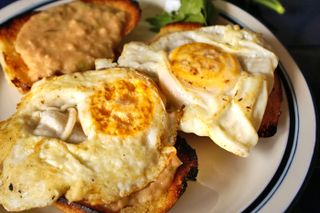
At home, Mexico Cooks! occasionally prepares molletes, an old-time family favorite. I grill a bolillo (a dense-textured and crusty white bread roll), add a thick smear of chile-spiced refried beans, and top them with huevos volteados (over-easy eggs). With some salsa cruda (home-made fresh salsa) a fresh fruit accompaniment, this almuerzo is really stick-to-your-ribs.
Around 10.30 or eleven o'clock in the morning, when the stomach starts to require something more substantial to keep the body going, many people take a break for almuerzo. There really is no adequate word in English for this meal. It's not breakfast and it's not a snack. Almuerzo is typically a larger meal than desayuno. Workers on a construction job, for example, often stop work, build a little fire, and heat up yesterday's leftovers that they've brought along in a 'tupper'–the generic word in Mexico for a covered plastic container. Warmed-up leftovers, a stack of tortillas, and a fresh-made pot of coffee keep the girders going up.
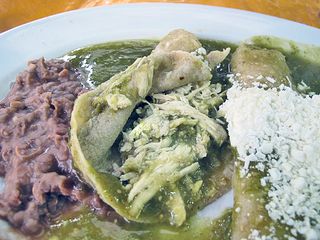
Another really hearty almuerzo: a plateful of enchiladas verdes con pollo deshebrado (enchiladas with shredded chicken in green sauce) topped with finely grated white cheese and minced onion, accompanied by a guarnición (side) of refried beans.

Here's another typical almuerzo in Mexico: chilaquiles verdes (fried tortilla strips simmered in green sauce), topped with grated white cheese and thinly sliced white onions, then crowned with huevos a gusto (eggs however you like them). Add a side of frijolitos refritos, a plate of ripe papaya, a warm-from-the-oven bolillo, either salsa or butter for the bread, and a great cappuchino, all served on a sunny terrace. Heaven…
Next week, next meal! We'll save your place at the table.
Looking for a tailored-to-your-interests specialized tour in Mexico? Click here: Tours.
